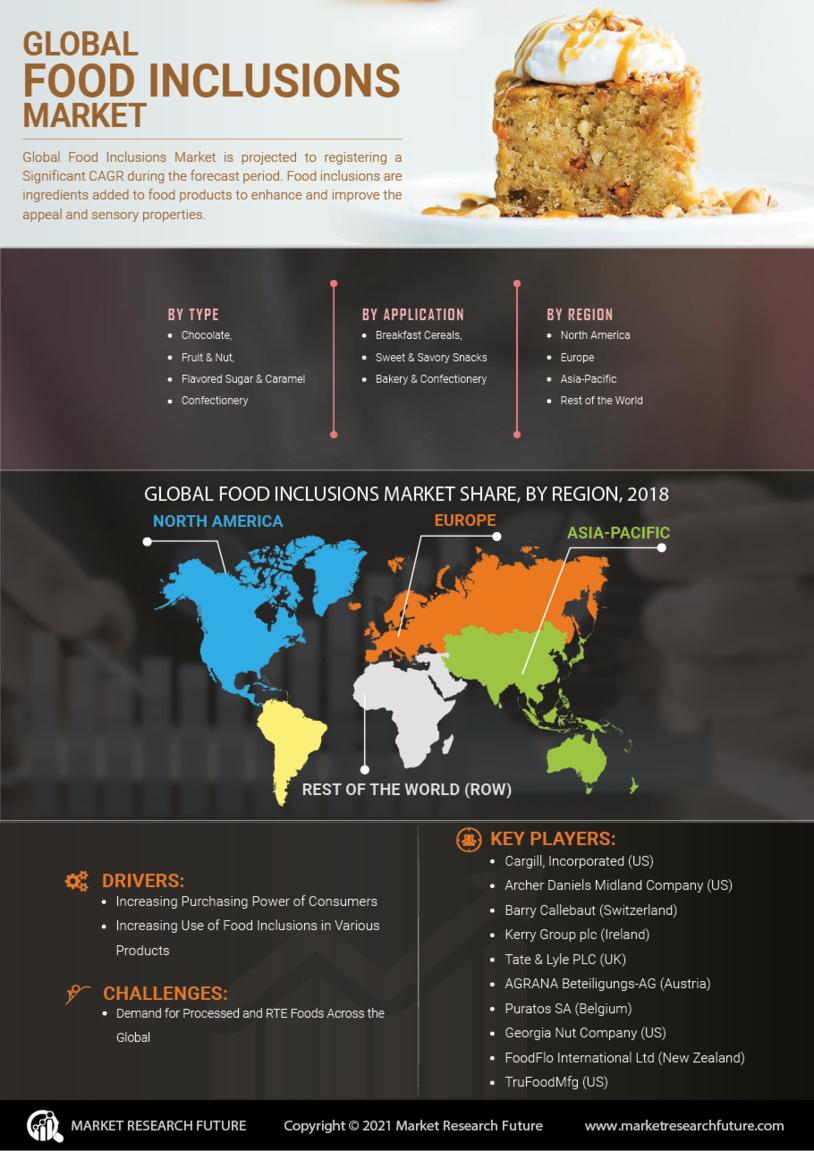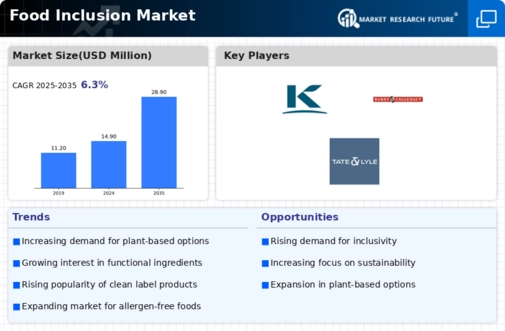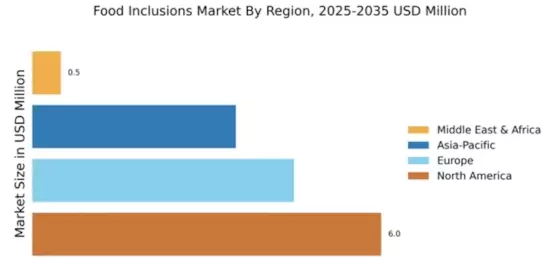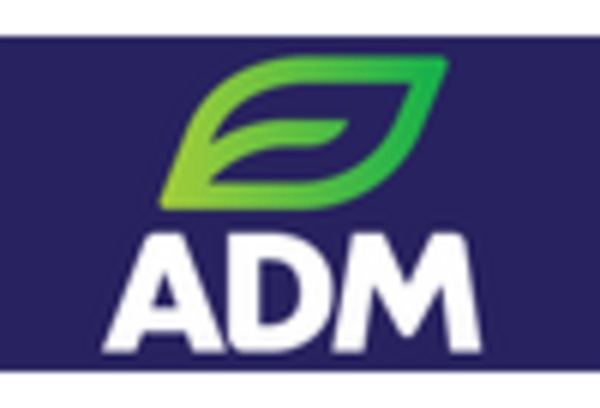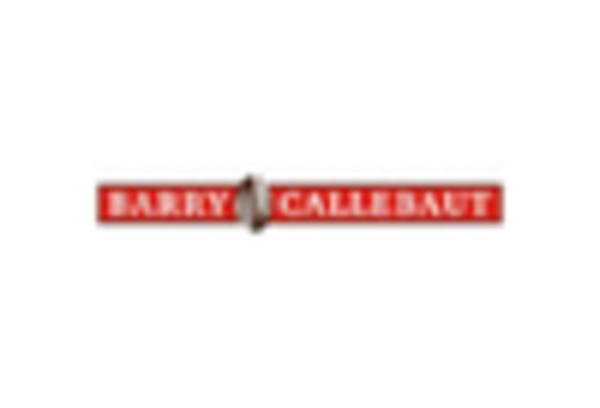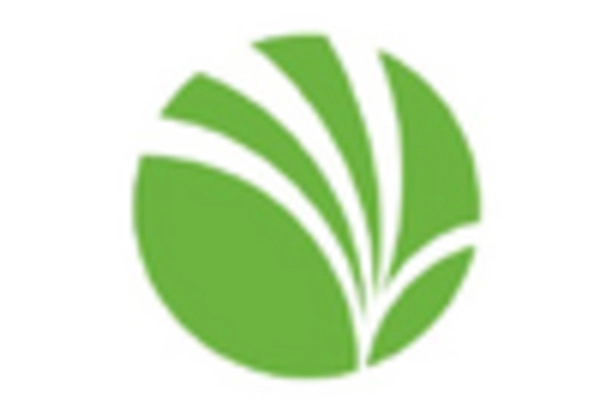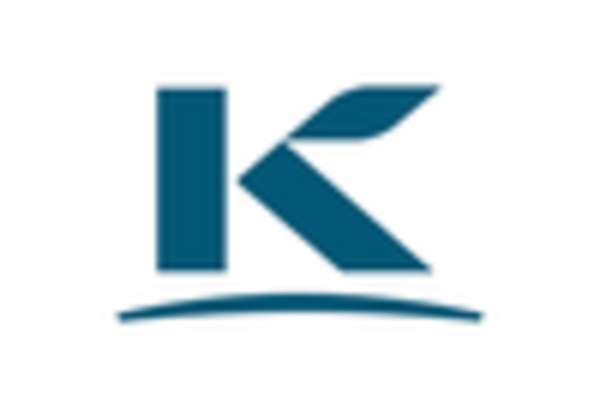Market Growth Projections
The Global Food Inclusion Industry is poised for substantial growth, with projections indicating a market value of 14.9 USD Billion in 2024 and an anticipated increase to 28.9 USD Billion by 2035. This growth trajectory suggests a robust demand for food products that incorporate beneficial ingredients. The compound annual growth rate of 6.22% from 2025 to 2035 reflects the industry's potential as it adapts to changing consumer preferences and technological advancements. The market's expansion is likely to be driven by various factors, including health consciousness, dietary diversity, and regulatory support, positioning it as a dynamic sector within the global food industry.
Diverse Dietary Preferences
The Global Food Inclusion Industry is significantly influenced by the diversification of dietary preferences. With an increasing number of consumers adopting vegetarian, vegan, and gluten-free diets, food manufacturers are compelled to innovate and include alternative ingredients. This shift is not merely a trend but a reflection of broader societal changes towards sustainability and ethical consumption. As a result, the market is expanding to accommodate these preferences, with projections indicating a growth to 28.9 USD Billion by 2035. Companies are investing in research and development to create products that cater to these diverse dietary needs, thereby enhancing their market presence.
Rising Health Consciousness
The increasing awareness of health and wellness among consumers is a primary driver of the Global Food Inclusion Industry. As individuals become more informed about the nutritional value of their food, there is a growing demand for products that include functional ingredients. This trend is evident in the rising sales of fortified foods and beverages, which are projected to reach 14.9 USD Billion in 2024. Consumers are actively seeking options that enhance their health, leading to a shift in food production and marketing strategies. Consequently, manufacturers are focusing on incorporating vitamins, minerals, and other beneficial components into their offerings.
Consumer Demand for Transparency
The growing consumer demand for transparency in food labeling is reshaping the Global Food Inclusion Industry. Modern consumers are increasingly scrutinizing ingredient lists and seeking clarity regarding the sourcing and processing of their food. This trend has prompted manufacturers to adopt more transparent practices, including clear labeling of food inclusions and sourcing information. As a result, companies that prioritize transparency are likely to gain a competitive edge in the market. This shift towards informed consumption is expected to drive growth, as consumers gravitate towards brands that align with their values and provide clear information about their products.
Regulatory Support for Nutritional Standards
Government regulations aimed at improving nutritional standards are a significant driver of the Global Food Inclusion Industry. Many countries are implementing policies that encourage the fortification of staple foods with essential nutrients. This regulatory support not only promotes public health but also drives market growth by creating a favorable environment for food manufacturers. As governments recognize the importance of addressing nutritional deficiencies, the demand for fortified products is expected to rise. This trend is likely to contribute to the market's expansion, as companies align their strategies with regulatory frameworks to enhance their product offerings.
Technological Advancements in Food Processing
Technological innovations in food processing play a crucial role in shaping the Global Food Inclusion Industry. Advances such as improved extraction methods and enhanced preservation techniques enable manufacturers to incorporate a wider range of ingredients without compromising quality. These technologies facilitate the development of products that are not only nutritious but also appealing to consumers. As the industry embraces these advancements, it is likely to witness a compound annual growth rate of 6.22% from 2025 to 2035. This growth is indicative of the market's potential as companies leverage technology to meet the evolving demands of health-conscious consumers.
